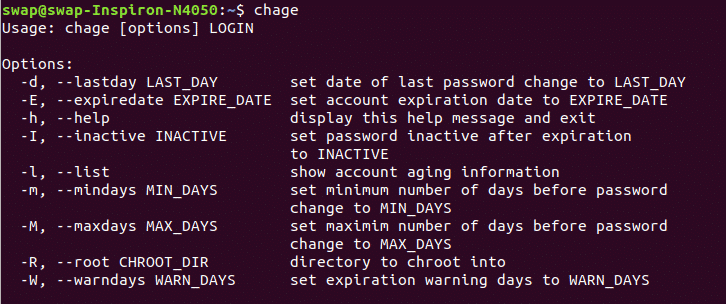

Linux Learning Recommended Video Courses: If your filesystem is XFS, it can be grown while mounted using the xfs_growfs command: sudo xfs_growfs /Ĭonfirm new size using df -h $ df -hT | grep /dev/vdaĬongratulations!, you have successfully resized an ext2/3/4 or XFS root partition on Linux without LVM. The filesystem on /dev/vda1 is now 7864059 blocks long. The last step is to resize the file system to grow all the way to fill added spaceįor ext4 file system, use resize2fs $ sudo resize2fs /dev/vda1įilesystem at /dev/vda1 is mounted on / on-line resizing required └─vda1 253:1 0 30G 0 part / Step 4: Resize / partition to fill all space This will resize partition 1 on /dev/vda. Now use growpart to extend your partition.

'on' : fail if sanity checks indicate no support 'force' : try despite sanity checks (fail on failure) This requires kernel support and 'partx -update'
#Extfs terminal commands update
u | -update R update the the kernel partition table info after growing N | -dry-run only report what would be done, show new 'sfdisk -d' Less than 'F' bytes, do not resize (default: 1048576) fudge F if part could be resized, but change would be Rewrite partition table so that partition takes up all the space it can Help page can be viewed by passing -h argument $ growpart -h
#Extfs terminal commands install
On Ubuntu / Debian system, run: sudo apt -y install cloud-guest-utils gdiskįor CentOS / RHEL / Fedora server, run: sudo yum -y install cloud-utils-growpart gdisk Before running dumpe2fs, make sure to run df -hT command to know the filesystem device names. dumpe2fs is a command line tool used to dump ext2/ext3/ext4 filesystem information, mean it displays super block and blocks group information for the filesystem on device.
#Extfs terminal commands how to
This command is provided by cloud utils package. How to View EXT2/EXT3/EXT4 Filesystem Information. Install cloud utils packageįor those new to growpart, it is a Linux command line tool used to extend a partition in a partition table to fill available space. The next action is to expand the partition ( Partition 1) in our example, to the maximum size the disk provides. We can see the disk has grown by 20GB, from 10GB to 30GB. The first thing to do is to confirm the new disk size.

Start your VM and ssh as a user with sudo privileges. If you’re on a different Virtualization platform, refer to its documentation for how to extend OS virtual disk. $ sudo qemu-img resize /var/lib/libvirt/images/centos7.qcow2 +20G I/O size (minimum/optimal): 512 bytes / 512 bytes Sector size (logical/physical): 512 bytes / 512 bytes Vda /var/lib/libvirt/images/centos7.qcow2 How to extend/increase KVM Virtual Machine (VM) disk sizeįor KVM I can check virtual disk path using the command below: $ sudo virsh domblklist centos7.I use KVM virtualization technology, so this guide works for me: I will extend my root block device to 30GB.


 0 kommentar(er)
0 kommentar(er)
